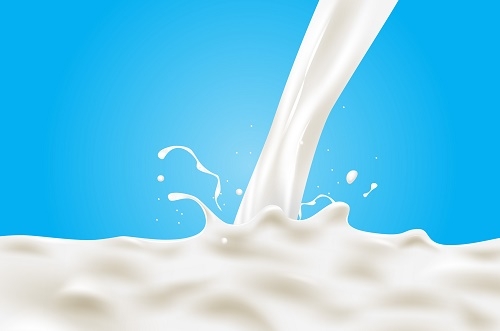
Economists with the country's largest dairy farm lender are now predicting that farmers will get prices for their milk that are 5%-8% lower on an ongoing basis than they have been in the past.
In their weekly Market Focus and August Agrifocus publications ANZ's economists say the current bout of weakness in global dairy prices appears to reflect some "structural shifts" in the marketplace that will have implications over the medium term.
"That combination is enough to lower our expectation of where the milk price will sit on average over the cycle by 25-50 cents (from the nine-year average of $6.35/kg MS)," the economists say.
"Generally the equilibrium price for wholemilk powder has been considered to be around the mid-US$3,000/t mark and has averaged US$3,400/t over the last nine years.
"We now expect a range of US$2,800-3,400/t (mid-point $3,100/t) in the medium term due to these structural forces (though volatility is expected to continue to see prices cycle outside this range). This is 10-15% lower than previously assumed."
The economists say they expect a falling New Zealand dollar to "provide a partial counterbalance at the farm gate".
"The NZD is expected to trade at a lower level on average over the coming years; fair value has dropped by 4-6 cents. This provides something of a buffer, such that weaker international dairy prices will not flow through one-for-one to the farm-gate. Rather, some of the hit is taken by consumers of imported goods," they say.
"So we are left with a 5-8% fall in dairy incomes and remember that’s not just a one off; it’s expected to be sustained. Put that through a discounting cash-flow model and it’s enough to see rural farm values retrace modestly. Of course cyclical dynamics (i.e. current price weakness) means the correction in farm values in the near-term will likely be a lot larger than that."
Quotable Value offshoot Rural Value has indicated that there's been a big shift in sentiment following the recent sharp falls in dairy prices and there's now an expectation that there will be a drop in farm prices.
The ANZ economists say the "major structural shifts" that they are seeing include:
- Increased European competition;
- A period of rapid New Zealand production;
- A more subdued medium-term demand backdrop (China, Russia and oil-dependent countries); and
- Downward pressure on the global cost of production from lower energy, feed and fertiliser costs, the cost of capital lending to more large scale developments and a higher US dollar.
"A lot of these facets contain political elements with supply being supported via self-sufficiency drives or playing to self-interest groups," the economists say.
"The economics is simple; prices sit below the marginal cost of production so supply should be curtailed. This conventional economic (reality) channel is being curtailed by politics as regions choose to implicitly subsidise production in one shape or another such that markets forces are not coming to the fore. The TPP is a real time example!"
The ANZ economists say a lot a lot is going to depend on "whether and to what extent farmers can put the scalpel to costs".
"There are some wide-ranging estimates floating around. The likes of Dairy NZ are targeting removing up to $1 per kg milk solid in operating costs. That’s extremely tough, but the current position of dairy prices requires ambitious numbers. But we are more interested in the medium-term story. If dairy incomes are going to be 25-50 cents per kg of milk solid lower on average over coming years, then the cost side needs to exhibit the same – and this can’t be achieved by cutting core expenditure that generates long-term efficiency and productivity, such as fertiliser, pasture renewal and animal health. Cuts in those areas this season seem inevitable – with the inevitable impact on production – but they are not sustainable. It’s not going to be an easy equation to balance."
Dairy prices
Select chart tabs
4 Comments
A very well informed guess.
so when will the prices supermarkets charge for milk fall? they are quick enough to raise them and 4mths on theres been no price drop. its time families had a fair price. greedy supermarkets!!
Sounds far too optimistic
A big factor controlling dairy price now and for the foreseeable future, is the barrel price of crude oil, as odd as it may seem. When that gets below about $80 US it is uneconomic to make fuel from corn. And crude prices can't get anywhere near that due to the new sea of fracked oil - so the glut of corn becomes the glut of milk. Which then begs the Q: does it make sense for little NZ to try and force the worlds two largest grain producing nations, Canada and USA, to deregulate,open up and modernise their dairy industries? Be careful what you wish for.

We welcome your comments below. If you are not already registered, please register to comment.
Remember we welcome robust, respectful and insightful debate. We don't welcome abusive or defamatory comments and will de-register those repeatedly making such comments. Our current comment policy is here.